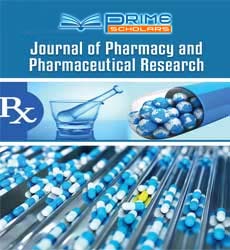Perspective - (2023) Volume 7, Issue 2
Unraveling the Metabolism of Drugs: Understanding the Body's Chemical Transformers
Shirley Ina*
Department of Medicine, University of Colorado School of Medicine, USA
*Correspondence:
Shirley Ina,
Department of Medicine, University of Colorado School of Medicine,
USA,
Email:
Received: 31-May-2023, Manuscript No. IPIPR-23-16996;
Editor assigned: 02-Jun-2023, Pre QC No. IPIPR-23-16996 (PQ);
Reviewed: 16-Jun-2023, QC No. IPIPR-23-16996;
Revised: 21-Jun-2023, Manuscript No. IPIPR-23-16996 (R);
Published:
28-Jun-2023, DOI: 10.21767/ipipr.7.02.018
Introduction
Drug metabolism is a complex and essential process in the body
that plays a crucial role in the absorption, distribution, and elimination
of medications. Metabolism refers to the chemical transformation
of drugs into metabolites, which can alter their pharmacological
properties, efficacy, and toxicity. Understanding the
metabolism of drugs is vital for optimizing drug therapy, predicting
drug interactions, and ensuring patient safety. In this article, we
explore the intricacies of drug metabolism, including the major
metabolic pathways, enzymes involved, and factors influencing
drug metabolism.
Description
Phase I metabolism involves enzymatic reactions that introduce or
expose a functional group on the drug molecule. The most common
reactions include oxidation, reduction, and hydrolysis. Cytochrome
P450 enzymes, particularly CYP3A4, CYP2D6, and CYP2C9,
are major contributors to phase I metabolism. These enzymes add
or expose polar groups, making the drug more water-soluble and
facilitating further elimination.
Phase II metabolism involves conjugation reactions, where metabolites
produced in phase I are further modified by the addition of
small polar molecules, such as glucuronic acid, sulfate, or amino
acids. This conjugation process enhances the water solubility of
the drug and prepares it for excretion.
Cytochrome P450 enzymes are a superfamily of enzymes responsible
for the metabolism of a wide range of drugs. They are primarily
located in the liver but can also be found in other organs,
including the intestine.
Genetic polymorphisms in drug-metabolizing enzymes can significantly
impact drug metabolism and response. Some individuals
may have genetic variations that result in altered enzyme activity,
leading to variations in drug metabolism rates and potential differences
in drug efficacy and toxicity.
Drug-drug interactions can occur when one drug affects the metabolism
of another drug. Enzyme inhibition or induction can lead
to altered drug metabolism and potentially affect therapeutic outcomes.
For example, a drug that inhibits CYP3A4 can increase the
plasma concentration of other drugs metabolized by this enzyme.
Age and certain disease conditions can influence drug metabolism.
Elderly individuals may experience a decline in hepatic enzyme activity,
leading to altered drug metabolism. Likewise, certain diseases,
such as liver or kidney impairment, can affect the body’s ability
to metabolize drugs properly.
Knowledge of drug metabolism pathways and enzyme variations
helps guide dose adjustments in individuals with altered drug metabolism
rates. Genetic testing and therapeutic drug monitoring
may be employed to tailor drug dosing regimens to individual patients.
Advances in pharmacogenomics enable personalized medicine
approaches, tailoring drug therapy to an individual’s genetic
profile. By considering genetic variations in drug-metabolizing enzymes,
healthcare professionals can optimize drug selection and
dosing, improving therapeutic outcomes and minimizing adverse
effects.
Conclusion
The metabolism of drugs is a multifaceted process that influences
the pharmacokinetics, efficacy, and safety of medications. Phase
I and phase II metabolic pathways, mediated by enzymes such as
cytochrome P450 and UDP-glucuronosyltransferases, play critical
roles in drug transformation and elimination. Understanding the
factors influencing drug metabolism, including genetic variations
and drug-drug interactions, allows for individualized treatment
approaches and optimization of drug therapy. By unraveling the
complexities of drug metabolism, healthcare professionals can enhance
patient safety, improve therapeutic outcomes, and pave the
way for personalized medicine in the field of pharmacology.
Citation: Ina S (2023) Unraveling the Metabolism of Drugs: Understanding the Bodyâ??s Chemical Transformers. J Pharm Pharm Res. 7:018.
Copyright: © 2023 Ina S. This is an open-access article distributed under the terms of the Creative Commons Attribution License, which permits unrestricted use, distribution, and reproduction in any medium, provided the original author and source are credited.

